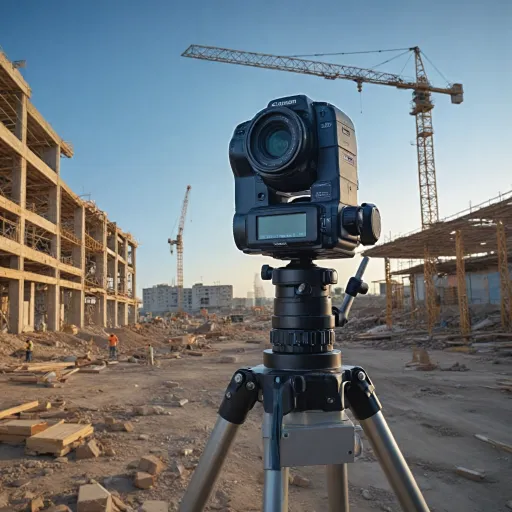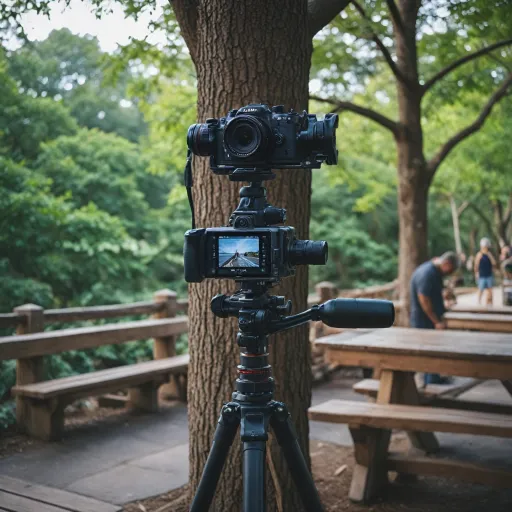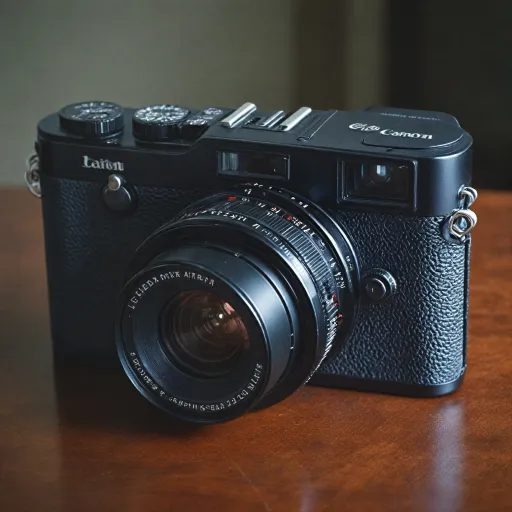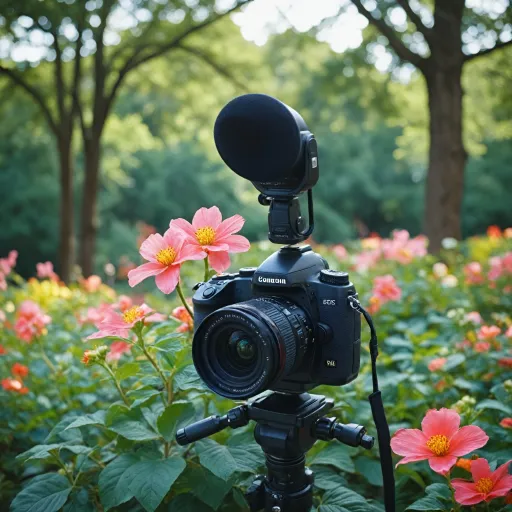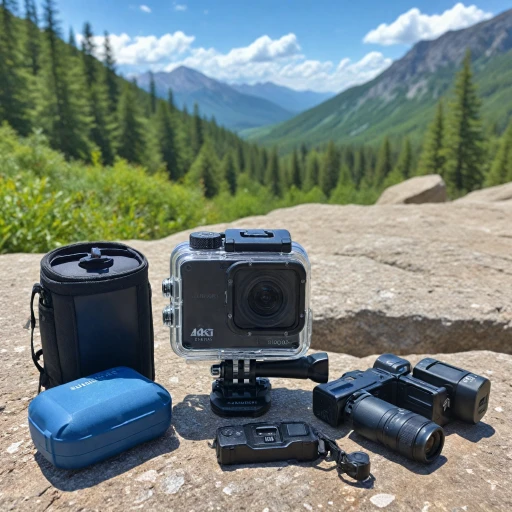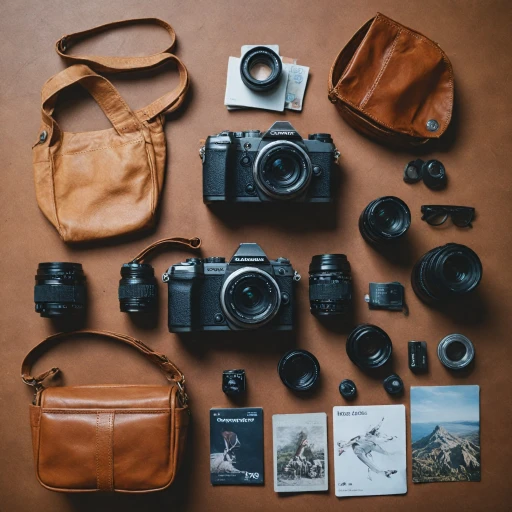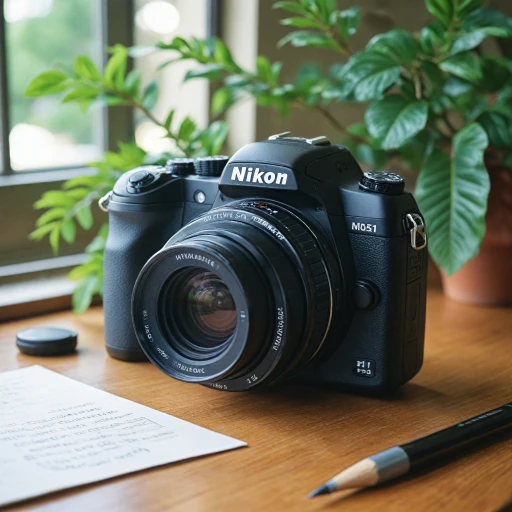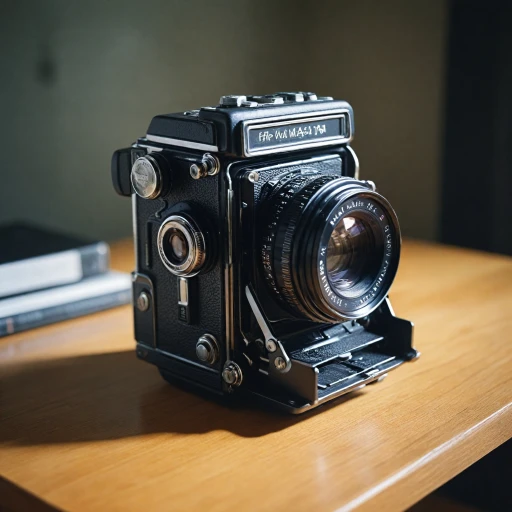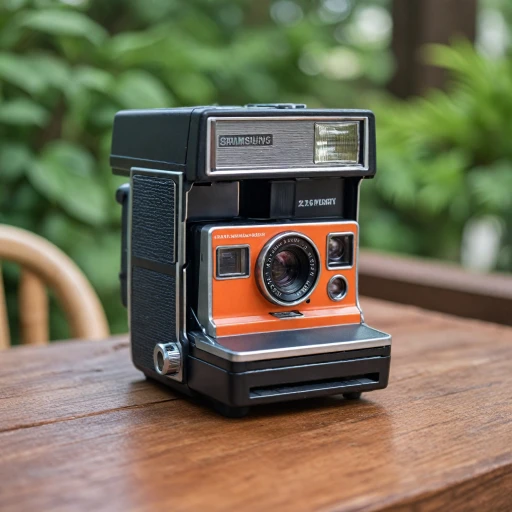
Understanding Stereo Cameras
Diving into the Depths of Stereo Cameras
Exploring the world of stereo cameras is akin to stepping into a realm where depth perception and image quality converge to create astonishing visuals. At its core, a stereo camera captures images in a manner that resembles human vision, utilizing two lenses to create depth and a sense of three-dimensionality. This stereoscopic vision is what allows these cameras to render photos with an unparalleled spatial perspective. Stereo cameras function by capturing two separate images from slightly different angles, mimicking the way our eyes perceive depth. The image sensor in these cameras plays a crucial role, with some models offering advanced features like high resolution and precise depth sensing capabilities. The range of stereo cameras available today is diverse, from digital stereo cameras that deliver high-definition results to film-based models that bring a vintage feel to photography. Popular models such as the FinePix Real or Kodak's offerings in stereo photography are renowned for their innovative lens systems. Additionally, brands like Panasonic Lumix provide full-frame options that integrate modern technology into the sophisticated world of stereo imaging. A significant component of stereo cameras is the beam splitter, which facilitates the dual capture necessary for stereo images. This system allows for enhanced depth perception, making it ideal for applications such as object recognition and generating stereo images and videos. As you venture further into understanding the unique world of stereo cameras, consider exploring how these devices compare and complement other specialized cameras, like pixel monitoring cameras. For those curious about real-time depth and vision applications, live camera feeds offer intriguing insights into how stereo cameras can capture dynamic environments. Explore more about this on live camera feeds.Key Features of Stereo Cameras
Essential Characteristics of Stereo Devices
Stereo cameras are a marvel of modern imaging technology, distinct from traditional single-lens systems in several ways. The unique design of these cameras allows users to capture images that offer a more lifelike depth perception.
Here's a closer look at some of the key features to help you navigate the realm of digital stereo devices:
- Dual Lens Configuration: A defining feature of stereo cameras is their dual lens system. These lenses mimic the human eyes, capturing two slightly different images to create a single, stereoscopic view of the scene. The spacing of the lenses can impact the depth effect and must be carefully considered when choosing a model.
- Image Sensor and Quality: Unlike traditional cameras, stereo cameras leverage powerful image sensors that work in tandem to provide enhanced image quality. High resolution sensors are paramount to capturing fine details in stereo images, contributing to better post-processing capabilities.
- Advanced Software Integration: An essential differentiator is their ability to integrate with stereo vision software. This software enables depth sensing and object recognition, enriching the user's experience by revealing more information about captured scenes.
- Beam Splitter Capabilities: Some stereo devices incorporate a beam splitter, which divides light paths and contributes to more accurate depth measurements and enhanced stereoscopic images.
- Connectivity and Power: Modern systems often feature USB interfaces for ease of data transfer and digital image management. Reliable power options ensure that the cameras can operate effectively during prolonged shoots, whether you're using the FujiFilm FinePix, Kodak Stereo, or Panasonic Lumix models.
Each of these features plays a crucial role in the functionality and performance of digital stereo cameras, shaping the quality of the images you capture. For a more in-depth exploration of these features, consider exploring the potential of pixel monitoring cameras and how they intersect with the world of depth-based photography.
Applications of Stereo Cameras
Exploring Practical Applications of Stereo Cameras
Stereo cameras, known for their ability to capture images with depth and precision, have found a diverse range of applications across various industries. These devices utilize stereoscopic vision to create immersive and high-resolution images, making them invaluable tools in both commercial and creative settings. One of the primary uses of stereo cameras lies in the realm of depth sensing and object recognition. By analyzing the disparity between two slightly offset images captured by different lenses, stereo cameras can generate accurate 3D models of environments or objects. This capability is crucial in applications such as robotics, where precise depth perception is necessary for tasks like navigation and manipulation. In the film and photography industry, stereo cameras are cherished for their ability to produce high-quality, immersive photos. Digital stereo models, including systems like the Fujifilm FinePix and Kodak Stereo, enable photographers to capture images with enhanced depth. These cameras often feature multiple camera lens configurations and advanced image processing software to ensure that photos are rendered with impeccable detail and resolution. Additionally, the healthcare industry has embraced stereo camera technology in medical imaging systems. These systems can be used for 3D modeling in minimally invasive surgeries, providing surgeons with a clearer view of the operative field. The fine detail and depth perception offered by stereo cameras enhance the precision and safety of these procedures. In agriculture, stereo cameras play a role in monitoring crop health. By capturing stereo images, these cameras help in assessing plant growth and identifying potential diseases, enhancing the efficiency of farm management practices. The versatility of stereo cameras also extends to security and surveillance, where depth cameras enhance the accuracy of motion detection systems. By utilizing beam splitter technology, these cameras can differentiate between human and non-human movements, optimizing security measures. For those looking to explore the world of stereo cameras further, considering the various applications and advantages they offer is crucial. Whether it’s for professional use or hobby photography, the possibilities opened by this technology are virtually limitless. Discover more on the potential of cameras stereo and how they can revolutionize your work on our blog about the versatility of clamp mount cameras.Choosing the Right Stereo Camera
Identify Your Requirements
When choosing a stereo camera, it’s important to pinpoint exactly what your needs are. Are you looking to explore stereo vision as a hobby, or do you require a camera for professional stereoscopic photography? The intended use will largely dictate the specifications you should prioritize, such as resolution, depth sensing, and image quality.Evaluating Camera Specifications
Delve into the technical specifications of the stereo camera models you’re considering. Factors like the type of lenses, whether it includes a beam splitter or depth camera technologies, and its digital capabilities like full frame or image sensor size, are crucial. High resolution and quality stereo images result from these precise elements. Consider whether you prefer digital stereo cameras or would like to explore film stereo cameras for a more traditional experience.Comparing Stereo Camera Brands and Models
The market offers various cameras from different brands, each with their exclusive features. Popular options like the Fujifilm FinePix or Panasonic Lumix series are renowned for their robust stereo images and impressive capabilities in object recognition and depth perception. It’s worth checking reviews and expert opinions to get a sense of each camera's strengths and weaknesses.Software and Accessories
Stereo cameras often come with associated software that enhances the stereoscopic experience, from editing stereo photos to advanced vision software for depth sensing. Additionally, think about the ease of use and additional processes required, such as USB connectivity for transferring images. Accessories, such as tripods and protective cases, can amplify your setup’s power and stability.Budget Considerations
Lastly, balance your needs against your budget. Stereo cameras can vary significantly in price depending on the technology and brand. Explore whether an investment in a high-end system like a finepix real or a more budget-friendly option will suit your requirements for producing high-quality images.Challenges in Stereo Photography
Overcoming the Hurdles in Stereo Photography
Stereo cameras offer a world of fascinating opportunities, but they are not without their challenges. Navigating these obstacles can often require a good understanding of both the technical aspects and practical limitations of stereo photography.
Depth Perception Complexities
One of the main challenges with stereo cameras is achieving accurate depth perception. While depth sensing is an essential feature, discrepancies between the images captured by the lenses can lead to issues. Proper alignment of the camera lenses and use of a beam splitter can help mitigate these challenges. However, the depth camera systems must be finely tuned to ensure the stereo views are synchronized.
Image Quality and Resolution
Stereo photography relies heavily on the resolution and image quality of the cameras used. High-quality image sensors, such as those found in full frame cameras, can help achieve better stereo images. However, dual camera setups bring in complexities like ensuring homogeneity in camera models and making sure each camera provides a consistent level of detail and color balance.
Software and Compatibility
The software used to process stereo images is as crucial as the hardware itself. Challenges arise when the cameras' software does not integrate well with image processing tools, which can affect the final quality of the stereo images. Compatibility with USB interfaces and various operating systems can also be a concern, requiring specific software solutions for different depth perception and object recognition tasks.
Handling the Bulkiness
While models like the Fujifilm FinePix and Kodak Stereo are acclaimed for their features, the bulk and weight of some stereo cameras can be a disadvantage. Adding the necessary peripherals for enhanced digital depth and stereoscopic vision can make the system cumbersome to manage and transport.
Despite these challenges, advancements are being made in the digital stereo domain to overcome these hurdles, promising even more refined and user-friendly stereo camera systems in the future.




